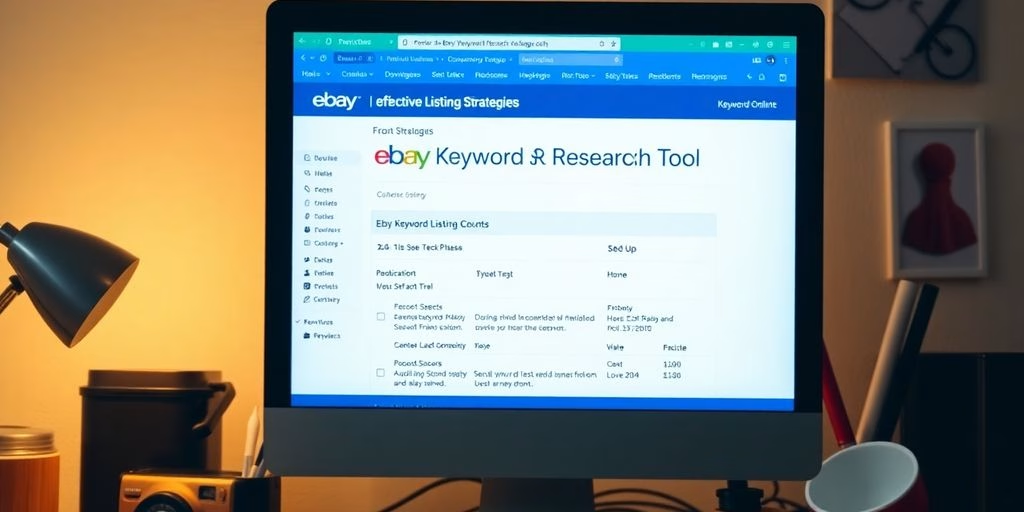The h1 tag remains a cornerstone of on-page optimization. This article delves into the strategies and best practices for leveraging h1 tags to enhance search engine visibility and user engagement. From crafting the perfect h1 to understanding its role in the hierarchy of headers, we explore how to effectively utilize h1 to h6 tags to create a structured, SEO-friendly content experience. Whether you’re looking to improve your rankings or captivate your audience, mastering the art of the h1 tag is an essential step in your SEO journey.
Key Takeaways
- Employ a unique and compelling h1 tag that incorporates your primary keyword, adhering to the ‘one h1 per page’ rule for clarity and SEO structure.
- Balance the inclusion of keywords with readability in your h1 and subsequent headings to ensure a natural, engaging user experience.
- Utilize h2 and h3 tags to create a detailed content hierarchy, which aids both user readability and search engine comprehension of your site’s structure.
- Understand the role of headers in obtaining featured snippets on SERPs, and optimize them to increase the chances of your content being featured.
- Combine SEO best practices with user experience by structuring your content with informative and keyword-rich headers that also facilitate site navigation.
The Art of Crafting Your H1: The Marquee of SEO

The Singular Sensation: One H1 to Rule Them All
In the grand theater of SEO, the H1 tag plays the starring role. Why only once, you ask? Think of it as the title of your book
Imagine walking into a vast library in search of one specific book. The H1 tag is like the large, bold title sign hanging from the ceiling, guiding you to the correct section. But here’s the twist: use it wisely and use it once. The H1 tag should encapsulate the central theme of your post, incorporating your primary target keyword in a way that feels natural and engaging.
So buckle up, my friend. You’re about to embark on a journey to transform your blog posts from hidden gems to shining stars on the search engine results pages (SERPs).
Remember, the H1 tag is not just a technical SEO checkbox to tick; it’s an opportunity to captivate and inform. Here’s how to make it count:
- Ensure clarity and focus for both readers and search engines
- Incorporate your primary target keyword naturally
- Keep your content structured and reader-friendly
Employing proper header tags is downright necessary when considering the user experience and SEO!
Keyword Conundrums: Balancing SEO and Readability
In the quest for SEO dominance, the H1 tag is your opening act, the headline that captures attention and sets the stage. But beware the siren song of keyword density over clarity. Your H1 should be a beacon of relevance, guiding readers to the value that lies within your content.
- Craft with care: Your H1 is not a dumping ground for keywords. It’s the hook that draws readers in.
- Be descriptive, yet concise: Aim for a clear, succinct H1 that encapsulates your page’s essence.
- Entice and engage: Try showcasing value or sparking curiosity within a confined character limit!
Remember, while keywords are the compass points for search engines, they should not overshadow the map of your content’s journey. Striking the right balance ensures that your blog posts maintain readability and relevance while signaling their topical significance to search engines.
By organically integrating keywords within your content, you avoid the pitfalls associated with keyword stuffing and instead deliver meaningful information that resonates with both users and search algorithms. For SEO, use H1 for the main title and H2, H3, etc., for subheadings. Include keywords where appropriate, but ensure they are relevant and natural.
The H1 Hallmark: Ensuring a Natural Fit for Your Primary Keyword
In the grand theater of SEO, your H1 tag takes center stage, spotlighting your content’s main act. It’s the bold declaration of your page’s intent, a beacon for both search engines and visitors. But how do you ensure this marquee shines the right light on your primary keyword? Here’s the script for a performance that earns a standing ovation:
- First Act: Discover your main keyword, the heart of your content. It should be a long-tail phrase that resonates with relevance and precision.
- Second Act: Integrate this keyword into your H1 tag, title tag, and throughout your content. Remember, it’s not about the number of keywords, but the quality of their placement.
- Encore: Avoid the trap of over-optimization. Your keyword’s role is to enhance, not overpower the narrative.
By adopting this approach, you ensure that each instance of keyword usage contributes meaningfully to the substance of your blog post while adhering to best SEO practices.
Imagine your H1 as the title sign in a vast library, guiding visitors to the correct section. Use it wisely and once, ensuring it encapsulates the central theme in a way that feels natural and engaging. After all, in the land of blog SEO, your H1 is the headline of your post—the first thing search engines and readers see.
Subheading Savvy: H2 and H3 Tags for SEO Success

The H2 Hierarchy: Structuring Your SEO Symphony
In the grand orchestra of SEO, your H2 tags are the first violins, leading the melody of your content’s structure. They set the rhythm for your readers and search engines alike, guiding them through the symphony of your text. Here’s how to make your H2s sing:
- Start with a bang: Your H2 should grab attention, much like a striking opening chord.
- Maintain the flow: Ensure each H2 logically follows the previous section, creating a seamless narrative.
- Harmonize with keywords: While maintaining readability, subtly infuse your H2s with relevant keywords.
- Echo the theme: Your H2s should reflect the central theme of your content, resonating with the core message of your H1.
Remember, the goal is not to stuff your H2s with keywords but to create a natural progression that enhances the user experience and SEO value.
By orchestrating your H2s effectively, you not only improve the readability of your content but also its performance in search rankings. It’s a delicate balance between art and science, where each header plays a critical role in the overall harmony of your SEO strategy.
H3 Helpers: Fine-Tuning Your Content’s Focus
When it comes to H3 tags, think of them as the trusty sidekicks to your H2s, offering a more granular breakdown of your content. They’re the chapters of your content narrative, providing detailed insights and supporting information that keep your readers hooked. Here’s how to make the most of them:
- Structure your H3s to reflect specific aspects or questions that stem from the H2 topics.
- Use them to introduce keyword-rich sections that are informative and engaging, without overstuffing.
- Ensure each H3 tag adds value and clarity, guiding your readers through the content journey.
By strategically using H3 tags, you not only enhance readability but also give search engines clear signals about the hierarchy and depth of your content.
Remember, the goal is to optimize content with keyword-rich titles, headings, and meta descriptions, all while maintaining a balance that appeals to both search engines and readers. Integrate keywords naturally for a seamless reading experience that also boosts your SEO performance.
Keyword Richness vs. Stuffing: The Subheading Balancing Act
Striking the perfect chord between keyword richness and stuffing is like walking a tightrope in the SEO circus. Your subheadings should sing, not shout, the relevance of your content. Here’s how to stay on pitch:
- Use long-tail keywords to hit the right notes with niche audiences.
- Create a symphony of related content with interlinking to enhance the user experience.
- Ensure each H2 is a harmonious supporting act to your main performance.
Remember, the goal is to engage your readers with a clear and informative narrative, not to overwhelm them with a cacophony of keywords.
By incorporating these practices, you’ll craft subheadings that resonate with both your audience and search engines, avoiding the dissonance of over-optimization. After all, the best SEO strategy is one that creates a seamless experience for both humans and bots.
SEO Mythbusting: Will Headers Make or Break Your Rankings?

The Truth About H1’s Impact on SEO
Let’s cut through the fog of SEO folklore and get to the heart of the matter: Are H1 tags the secret sauce to ranking success? Not quite. While they’re not the magic bullet, they’re more like the bread crumbs leading search engines through the forest of your content. In other words, not having an H1 tag might harm SEO more than having one helps. If 90%+ of top-ranking pages have H1 tags, it’s a strong signal that any site serious about SEO should follow suit.
Employing H1 tags effectively is a critical component of website structure and SEO best practices.
But how do you wield this tool without going overboard? Here’s a quick checklist:
- Ensure a unique and compelling H1 tag for each page.
- Integrate your primary keyword naturally.
- Avoid keyword stuffing; readability trumps density.
- Remember, H1 is your headline act—make it count.
So, while H1 tags may not be the crowning glory of your SEO strategy, they’re certainly part of the royal court. Think of them as the trusty knights that guard the gateway to your content kingdom.
Experimenting with H2s: Real-World SEO Results
The digital marketing world is abuzz with tales of H2s dramatically altering the SEO landscape. But what happens when we move past the buzz and look at the real-world results? Experimentation is key. By tweaking H2 tags with strategic keyword placement, some have seen their content climb the SERP ranks with the grace of a gazelle. Yet, it’s not just about the climb; it’s about staying there.
- Consistency is crucial: Ensure your H2s reflect the content’s core message.
- Relevance reigns supreme: Align H2s with user intent to keep bounce rates low.
- Clarity is king: A clear H2 can make your content a beacon for search engines.
Remember, the goal is to enhance the user experience while giving search engines clear signals about your content’s focus.
While the H2 tag may not be the magic bullet for SEO success, it’s certainly a sharp arrow in your quiver. By balancing keyword richness with readability, your H2s can help you hit the bullseye of user engagement and search engine satisfaction.
Beyond the Hype: Practical Header Strategies for SERP Success
While the SEO world often seems shrouded in mystical practices, the truth is much more pragmatic. Effective header strategies are less about gaming the system and more about enhancing user experience. Here’s how you can apply this to your headers:
- Craft a compelling H1 tag that’s not just a keyword dump but a headline that captures attention and encapsulates the essence of your content.
- Use H2 and H3 tags to structure your content in a way that guides the reader through your narrative, making it digestible and engaging.
- Remember, headers are not just for SEO; they’re signposts for your readers, helping them navigate your content landscape.
By focusing on clarity and value in your headers, you’re not only appeasing search engines but also providing a beacon for your readers in the vast sea of online content.
It’s not just about climbing the SERP ladder; it’s about ensuring that once visitors arrive, they find a treasure trove of information that’s easy to explore. A comprehensive guide to enhancing website accessibility, maximizing ROI, boosting domain authority, and optimizing various aspects of digital marketing for increased online success. Mastering the SERP with content optimization, backlink strategies, and SEO practices for top search engine rankings. Key takeaways include quality content, user intent, and strategic keyword placement.
Make Use of Featured Snippets with Headers

The Featured Snippet Phenomenon: A Header’s Role
In the quest for SEO dominance, the Featured Snippet, or as the cool kids call it, Position Zero, has become the digital marketer’s X marks the spot. It’s the prime real estate of search results, sitting pretty at the top, even before the first organic listing. To capture this spot, your headers need to do more than just look good; they must be the treasure map that leads Google’s bots to the gold.
Crafting headers that cater to Featured Snippets involves a delicate dance with the search algorithm. Your H1 tag should be the beacon that signals the start of a relevant and informative answer.
Here’s a quick rundown on how to make your headers snippet-worthy:
- Identify opportunities where your content can provide precise answers.
- Structure your content with clear, concise headers that make it easy for search engines to digest.
- Optimize your headers to include the keywords that climb the SERP ladder.
Remember, while headers are crucial, they’re part of a broader strategy that includes unique meta titles and on-page optimization to truly shine in the SEO spotlight.
Crafting Headers for Snippet Success: Tips and Tricks
To snag that coveted featured snippet spot, you need to think like a maestro conducting an SEO symphony. Start with a clear, concise H1 that sings to both search engines and searchers alike. Remember, your H1 is the opening act, setting the stage for what’s to come.
Next, let’s talk H2s and H3s. These subheadings should be like breadcrumbs leading the way to the main event—your content. Here’s a quick checklist to ensure your headers are snippet-ready:
- Reflect user intent by answering questions directly
- Use H2 tags to introduce sections and H3 tags for detailed breakdowns
- Optimize for long-tail voice search keywords
- Keep it natural; avoid the trap of keyword stuffing
By aligning your headers with user queries, you’re not just optimizing for SEO; you’re creating a beacon for featured snippets.
Remember, on-page optimization is crucial, not just for your headers but also for meta tags and image optimization. So, avoid common SEO starting errors and let your headers pave the way to SERP success.
Analyzing the Anatomy of a Featured Snippet-Worthy Header
To captivate both Google’s algorithms and the curious eyes of users, a featured snippet-worthy header must be a beacon of clarity and relevance. Crafting a header that stands out in the search results is akin to rolling out the red carpet for your content. Here’s a quick checklist to ensure your headers are dressed to impress:
- Start with a unique H1 tag that encapsulates your primary keyword.
- Follow up with informative H2 tags that support the main theme.
- Employ detailed H3 tags for a granular content breakdown.
Remember, the goal is to structure your content in a way that’s easy for search engines to digest and for users to understand at a glance.
By adhering to these principles, you’re not just organizing content; you’re enhancing its SEO power and making it more accessible. Ready to optimize your content with strategic interlinking and keyword placement? Let the headers lead the way!
Header Harmony: Blending SEO and User Experience

The Dual Purpose of Headers: Pleasing Bots and Humans Alike
In the grand theater of web content, headers are the marquee that guides both the audience and the critics—the users and the search engines. Crafting headers that resonate with both can be a delicate dance, but when done right, it leads to a standing ovation in the form of higher rankings and better user engagement.
Headers are not just about SEO; they’re about creating a clear path for your readers to follow. Like signposts on a journey, they should clearly indicate what lies ahead, enticing the reader to continue on the path. Here’s how to strike that perfect balance:
- Employ a unique H1 tag that captures the essence of your content.
- Use H2 tags to introduce main ideas, weaving in relevant keywords.
- Break down complex ideas with H3 tags for easier digestion.
Remember, the goal is to guide your reader through your content with ease, while also providing the search engine bots with the structured data they crave. > When headers are used strategically, they serve as a roadmap, enhancing the user’s journey and the site’s SEO footprint.
Lastly, don’t forget to craft anchor text strategically for user value and SEO success. Place links contextually, use diverse anchor text, and avoid over-optimization in the SEO chess game. And when it comes to images, optimize alt text with relevant keywords for SEO and accessibility, striking a balance that prioritizes value-driven content for long-term SEO success.
From H1 to H6: Crafting a Cohesive Content Journey
Embarking on the content journey from H1 to H6 is like navigating a ship through the vast ocean of SEO. Each heading is a beacon guiding search engines and users alike to the treasures within your content. The H1 tag stands as the lighthouse, illuminating the overarching theme, while H2s and H3s serve as buoys marking the path of your narrative.
- H1: Your content’s flagship, setting sail with your primary keyword.
- H2: Supporting vessels, each carrying a cargo of related ideas.
- H3: Agile speedboats, zipping between detailed points of interest.
- H4-H6: The crew, ensuring every detail is shipshape for the journey.
Remember, a seamless voyage from H1 to H6 not only pleases the search engine bots but also ensures a delightful experience for human readers. Your headings should nest in order, creating a structured hierarchy that’s easy to follow. Always place an H1 tag for each page, and take all steps to enhance user experience before considering SEO ranking. For good SEO, it’s not just about climbing the rankings; it’s about keeping your readers aboard and engaged.
Interlinking Insights: Using Headers to Enhance Site Navigation
When it comes to interlinking, it’s not just about weaving a web; it’s about crafting a narrative. Each header is a stepping stone in the story of your site, beckoning users to explore further. Here’s how to make those steps count:
- Start with a compelling H1: This is your opening chapter. Make it count by including your primary keyword and setting the tone for the journey ahead.
- Use H2 tags to build momentum: As subheadings, they’re the plot twists that keep readers engaged, guiding them to the next point of interest.
- Employ H3 tags for detail: These are the fine brushstrokes that add depth to your content’s canvas, enriching the user’s experience.
By strategically interlinking related articles or posts, you can guide visitors to relevant content while signaling to search engines the interconnectedness of topics within your blog.
Remember, a well-structured internal linking strategy not only ensures all of your important content gets indexed but also enhances the user experience by reducing bounce rates and optimizing content for user intent.
Discover the perfect blend of SEO and user experience with our expert strategies at Cerberus Works. Elevate your online presence and captivate your audience by visiting our website. Let’s achieve remarkable success together! Click here to learn more and get in touch with our team.
Conclusion: The SEO Symphony of H1 Mastery
As we draw the curtains on our SEO serenade, let’s not forget the maestro of the on-page orchestra—the H1 tag. Like a conductor with a baton, a well-crafted H1 tag can orchestrate your content’s visibility, guiding search engines and users alike to the symphony of your site’s information. Remember, in the grand performance of SEO, every header plays a part, but the H1 tag takes center stage. Use it once, use it well, and watch as your content takes a bow in the spotlight of SERPs. So go forth, SEO virtuosos, and compose your content with the precision of a keyword concerto, ensuring your H1 tag resonates in harmony with the melody of search optimization.
FAQs
How important is the H1 tag for SEO?
The H1 tag is crucial for SEO as it serves as the headline or title of a web page. It helps search engines understand the main topic of the page and should include the primary target keyword to improve the page’s search relevance.
Can I use multiple H1 tags on a single page?
It’s best practice to use a single H1 tag per page to clearly indicate the main topic. Multiple H1 tags can confuse search engines and dilute the page’s thematic focus.
Should H1 tags include exact match keywords?
H1 tags should naturally incorporate the primary target keyword. Exact match is not necessary, and readability should not be compromised for the sake of SEO.
How do H2 and H3 tags contribute to SEO?
H2 and H3 tags help structure content, making it easier for search engines to understand and rank. They should be informative, relevant, and include related keywords without keyword stuffing.
Do header tags impact the chances of ranking for featured snippets?
Well-crafted headers can improve the likelihood of your content being selected for featured snippets by providing clear, concise answers and structuring the information in a hierarchy that’s easy for search engines to parse.
How do headers enhance user experience?
Headers organize content into a clear hierarchy, making it more scannable and digestible for readers. This improves user experience, which can indirectly benefit SEO as search engines favor content that provides a good user experience.

![A Comprehensive Guide to Google Play Console Pricing [n8n]](https://cworks.id/wp-content/uploads/2025/09/cover-image-24622.avif)
![Understanding the Google Play Console Price: What Developers Need to Know [arvow]](https://cworks.id/wp-content/uploads/2025/05/4755037cthumbnail.avif)






































































































